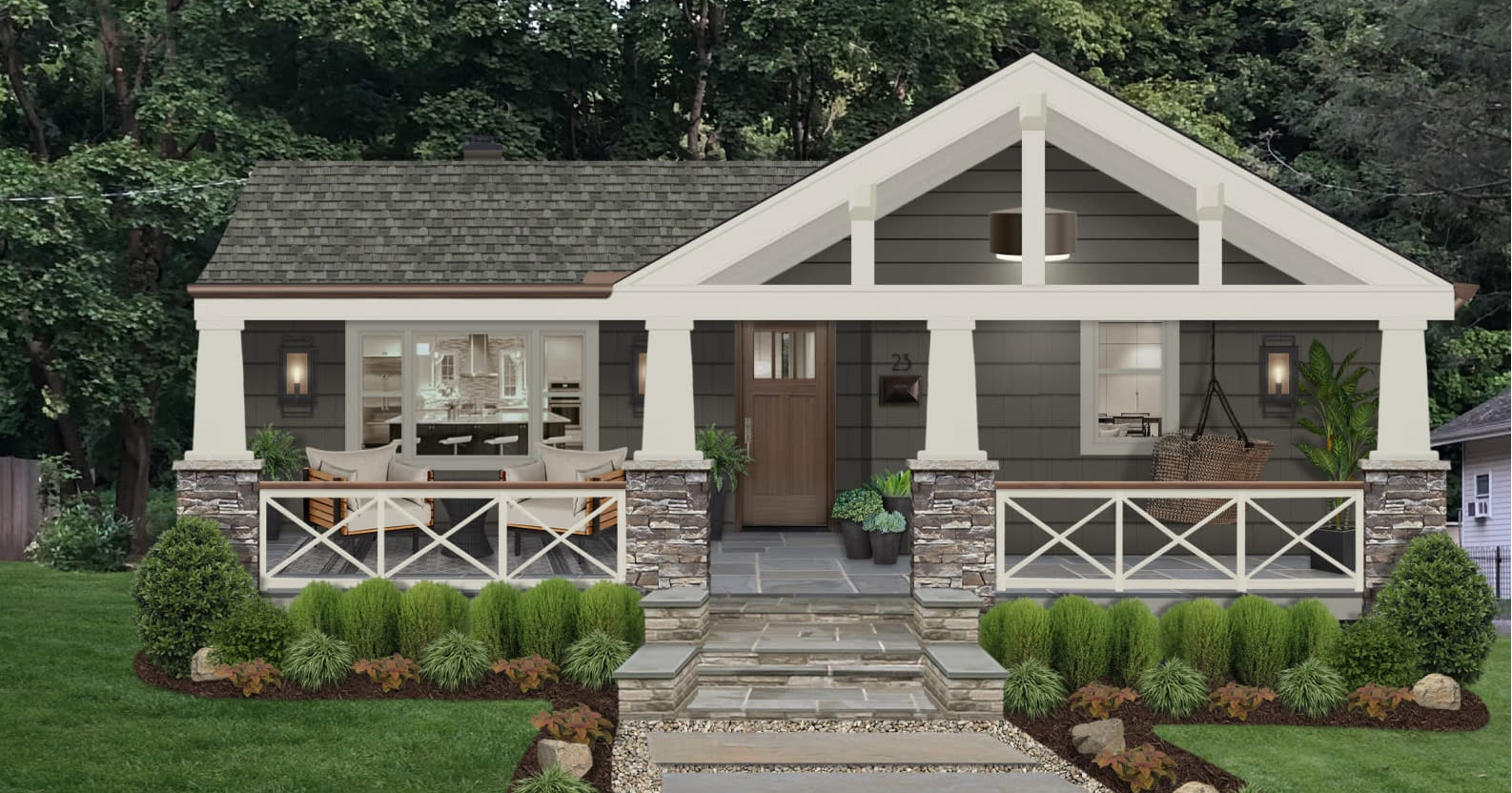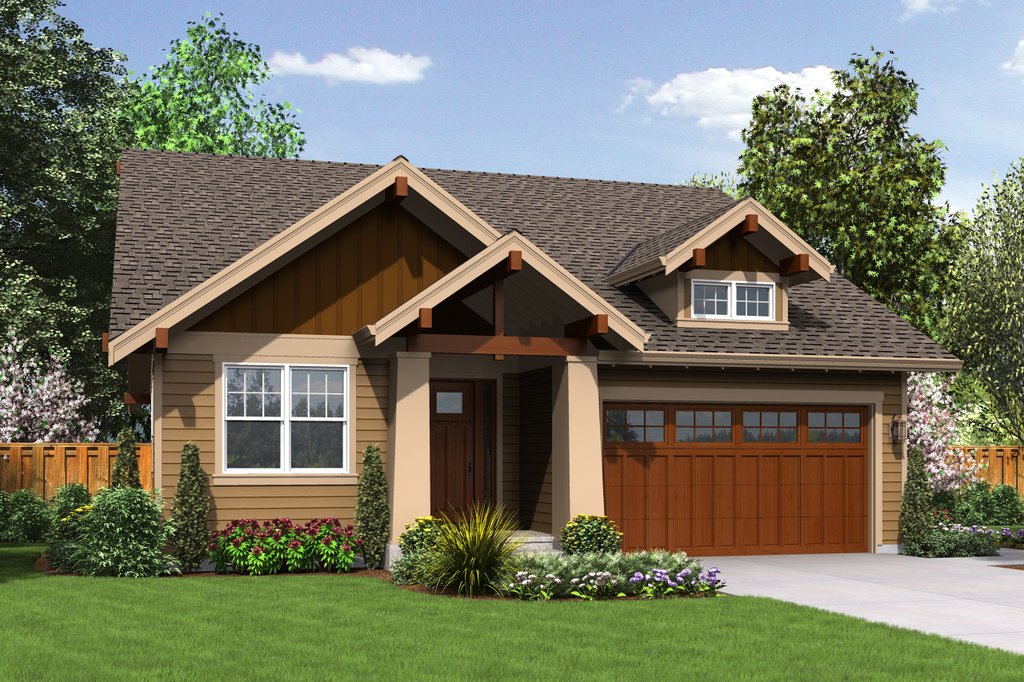The Function of Arts & & Crafts Architects in Elevating Architectural Solutions in Residential Design
Arts and Crafts architects significantly influence domestic style with their commitment to workmanship and sustainability. They prioritize handmade details and natural products, which improve both aesthetic appeals and neighborhood identification. By involving clients in the layout procedure, these architects develop distinct living spaces that reverberate with individual tastes. This method raises concerns regarding the future trajectory of domestic architecture and its possible influence on neighborhood characteristics. craftsman style house. What lies in advance for this timeless layout approach?

The Concepts of Arts and Crafts Architecture
The essence of Arts and Crafts architecture hinges on its commitment to craftsmanship and simplicity. This architectural motion emerged in the late 19th century as a reaction to automation, stressing the value of handmade information and all-natural materials. The concepts of Arts and Crafts architecture prioritize performance and consistency with the atmosphere. Frameworks usually include low-pitched roofs, wide eaves, and revealed rafters, advertising a sense of unity with nature.
Artisans played a significant function in this design, commonly integrating attractive elements like stained glass, tiles, and woodwork, which mirror regional workmanship. The color combination often tends to be earthy and controlled, allowing structures to blend seamlessly right into their surroundings. On top of that, the layout encourages open flooring plans and communal rooms, fostering a feeling of togetherness. On the whole, the concepts of Arts and Crafts architecture commemorate the appeal of simpleness and the significance of human link to both nature and neighborhood.

Lasting Practices in Residential Layout
While the need for eco accountable living remains to expand, sustainable practices in property design have gotten substantial grip amongst architects and property owners alike. Architects are significantly including energy-efficient modern technologies and lasting products right into their styles, intending to reduce carbon impacts and enhance power conservation. Approaches such as passive solar style, green roofings, and rainwater harvesting systems are coming to be conventional parts of contemporary household architecture.
The option of locally sourced products reduces transport emissions and sustains regional economic climates. Focus on all-natural light and ventilation not just improves indoor air top quality yet additionally decreases dependence on synthetic illumination and environment control systems. These lasting practices mirror a dedication to maintaining the atmosphere while supplying home owners with comfortable, reliable space. As awareness of environmental concerns expands, the integration of sustainability in residential design is poised to become a specifying attribute of contemporary architecture, directed by the principles developed by Arts and Crafts architects.
Modification and Customization in Home Design
Customization and his response customization in home layout have become key patterns in reaction to the expanding wish for distinct living settings that reflect individual preferences and way of livings. Property owners increasingly seek to customize rooms that resonate with their individual identities, resulting in a more purposeful connection with their space. craftsman style house. This activity encourages architects to involve clients in the style process, cultivating partnership that guarantees the final outcome embodies the property owner's vision
Aspects such as bespoke designs, customized products, and customized coatings allow for a varied series of expressions in residential design. Arts and Crafts architects play a critical duty in this development, highlighting workmanship and quality. Their concentrate on incorporating imaginative components with functionality guarantees that each home is not just aesthetically pleasing but also distinctively fit to the inhabitants' demands. This focus on modification improves the total property experience, producing areas that are both individual and enduring.
The Influence of Arts and Crafts Architects on Area Aesthetic Appeals
As communities evolve, the influence of Arts and Crafts architects significantly shapes their visual landscape. By highlighting handcrafted details, all-natural products, and conventional building methods, these architects develop homes that reverberate with their environments. Their styles usually incorporate local plants, textures, and colors, promoting a sense of consistency between built atmospheres and nature.
The Arts and Crafts movement advertises area identity with architectural continuity. By motivating property owners to embrace similar design concepts, neighborhoods develop a cohesive character that boosts visual allure. This building harmony not just enriches the aesthetic experience yet also instills a feeling of pride among citizens.
Additionally, the concentrate on sustainability and workmanship in Arts and Crafts architecture straightens with modern values, making these styles pertinent in modern settings. Inevitably, Arts and Crafts architects contribute substantially to the general elegance and social integrity of areas, leaving an enduring effect on their visual legacy.

Future Trends in Arts and Crafts Architecture
With a raising emphasis on sustainability and personalization, future patterns in Arts and Crafts click reference architecture are poised to blend typical workmanship with modern-day innovation - craftsman style house. Architects are most likely to focus on green products, using recovered timber and natural rock to improve the sustainability of residential designs. The combination of smart home innovation will end up being typical, enabling personalized living experiences without jeopardizing visual honesty
The resurgence of artisanal techniques will foster a restored admiration for handmade aspects, such as bespoke cabinets and customized tile work. Future designs may additionally mirror an emphasis on community-oriented rooms, encouraging interaction and connection amongst homeowners. Outside living areas will certainly acquire prominence, seamlessly incorporating nature right into the home atmosphere. As Arts and Crafts architecture progresses, it will continue to recognize its origins while adapting to contemporary requirements, creating unified rooms that mirror specific worths and lifestyles.
Regularly Asked Inquiries
What Inspired the Arts and Crafts Activity in Architecture?
The Arts and Crafts motion in architecture was influenced by a reaction versus industrialization, highlighting handmade quality, natural materials, and a return to standard workmanship, intending to create harmonious, useful areas that commemorated creativity and uniqueness.
Exactly how Do Arts and Crafts Architects Collaborate With Clients?
Arts and crafts architects collaborate with clients through open discussion, prioritizing individual needs and appearances. They emphasize workmanship and sustainability, promoting a collaboration that incorporates the client's vision with the designer's know-how in design and materials.
What Products Are Commonly Utilized in Arts and Crafts Homes?
Usual materials in Arts and Crafts homes consist of natural timber, stone, and brick, stressing workmanship and natural looks. These elements create a warm, inviting ambience, showing the movement's devotion to quality and simpleness in layout.
Exactly how Do Arts and Crafts Layouts Improve Indoor Living Spaces?
Arts and Crafts styles boost indoor living spaces by promoting all-natural light, open layout, and handcrafted details. These aspects promote a cozy, welcoming ambience, urging a link between homeowners and their atmospheres via thoughtful, functional looks.
What Are Some Famous Instances of Arts and Crafts Architecture?
Famous instances of Arts and Crafts architecture include the view it now Gamble Home, Greene and Greene's work of art in The golden state, and the Robie Home by Frank Lloyd Wright. These frameworks display handcrafted information and harmony with nature, specifying the movement's significance.